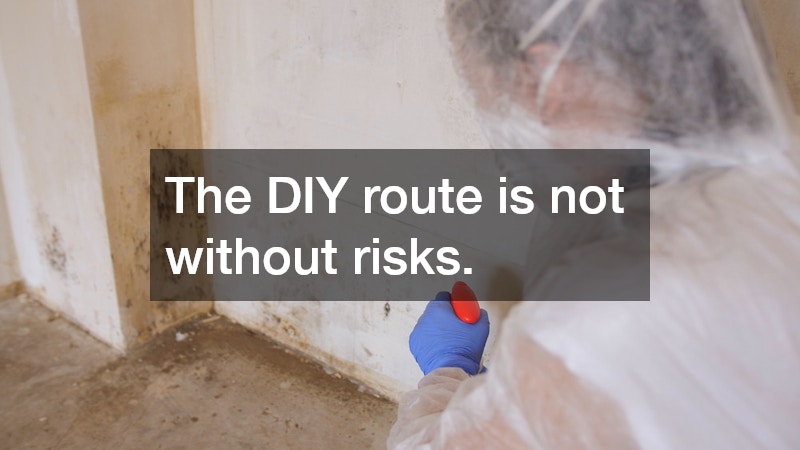Understanding mold remediation in San Diego, CA, and determining whether it’s a DIY project or requires professional assistance is crucial for ensuring a safe living environment. This article aims to guide you through key considerations and frequently asked questions to help you make an informed decision.
Mold growth in homes can lead to significant health risks and property damage if not addressed properly. With San Diego’s coastal climate, molds thrive, making remediation strategies essential for homeowners.
What Are the Signs That Mold Remediation Is Needed?
The necessity for mold remediation often manifests through visible indicators and subtle environmental changes. Common signs include the presence of noticeable mold patches on walls, ceilings, or floors. These can vary in color, including black, green, or white, and indicate persistent moisture issues. Additionally, warped surfaces or peeling paint can signal hidden mold colonies, particularly in areas with a history of water damage.
Aside from visible cues, odors play a critical role in identifying mold problems. A persistent musty smell often accompanies mold presence, even when it is not visible. This odor results from microbial volatile organic compounds (MVOCs) emitted by molds during their lifecycle. The scent is often strongest in confined, poorly ventilated spaces like basements, attics, or bathroom corners, alerting homeowners to the need for an investigation.
In addition to sensory signs, health-related symptoms among residents can indicate mold issues. Exposure to mold spores can trigger allergies, respiratory problems, and skin irritations. Symptoms such as sneezing, coughing, runny nose, or itchy eyes often intensify in individuals with pre-existing respiratory issues like asthma. Tracking these symptoms’ correlation with time spent at home can provide insights into potential mold exposure.
Can You Safely Perform Mold Remediation Yourself?
For minor mold issues, a DIY approach might seem feasible, particularly when dealing with small, isolated patches of mold growth. Essential tools include protective gear like gloves, masks, and goggles to mitigate exposure to mold spores. Cleaning solutions such as a mixture of detergent and water or vinegar and baking soda can effectively tackle surface mold. Ensuring proper ventilation during the cleaning process is crucial to prevent spore dispersal.
However, addressing mold remediation requires a comprehensive understanding of the underlying causes to prevent recurrence. The DIY route is not without risks, particularly if the individual lacks experience or the mold problem exceeds ten square feet, as per EPA guidelines. Misjudging the extent of mold infestation or improper handling can exacerbate the issue, leading to more significant damage and health risks. Assessing one’s capability and the mold’s severity will determine whether professional assistance becomes necessary.
How to Choose a Professional Mold Remediation Service in San Diego?
Selecting a reputable mold remediation service in San Diego involves evaluating several critical factors. Certification is a testament to a company’s credibility, ensuring adherence to industry standards and providing reassurance of qualified handling of mold issues. Organizations such as the Institute of Inspection Cleaning and Restoration Certification (IICRC) or the Environmental Protection Agency (EPA) offer credible certifications to look out for.
Experience and expertise in local conditions add a layer of assurance when selecting a service provider. San Diego’s unique climate and associated mold types require professionals familiar with the area’s specific challenges. Additionally, reading customer reviews and seeking recommendations from previous clients can offer insights into a company’s reliability, quality of service, and customer satisfaction levels.
A comprehensive and transparent approach to mold remediation is vital. Reputable services should conduct thorough inspections, offer detailed reports on mold presence and proposed remedies, and provide clear pricing structures. Ensuring they utilize safe, effective methods and guarantee post-remediation checks protects against recurrence and confirms a high standard of remediation service.
Conclusion
Deciding between DIY solutions and professional mold remediation depends on the severity of the mold issue, personal safety, and the likelihood of a thorough resolution. By considering the outlined questions, homeowners in San Diego, CA, can make informed decisions tailored to their specific circumstances. Small, manageable mold occurrences may fall within the scope of DIY capabilities, provided the individual is equipped with the right tools and knowledge. However, understanding the potential scale and complications of mold remediation remains vital.
The health implications and structural risks associated with mold growth should not be underestimated, emphasizing the importance of a timely response. Where doubts exist, particularly regarding hidden mold or extensive infestations, professional services provide peace of mind through expert assessment and treatment. Prioritizing safety and effectiveness ensures the well-being of residents and the long-term protection of their homes.



